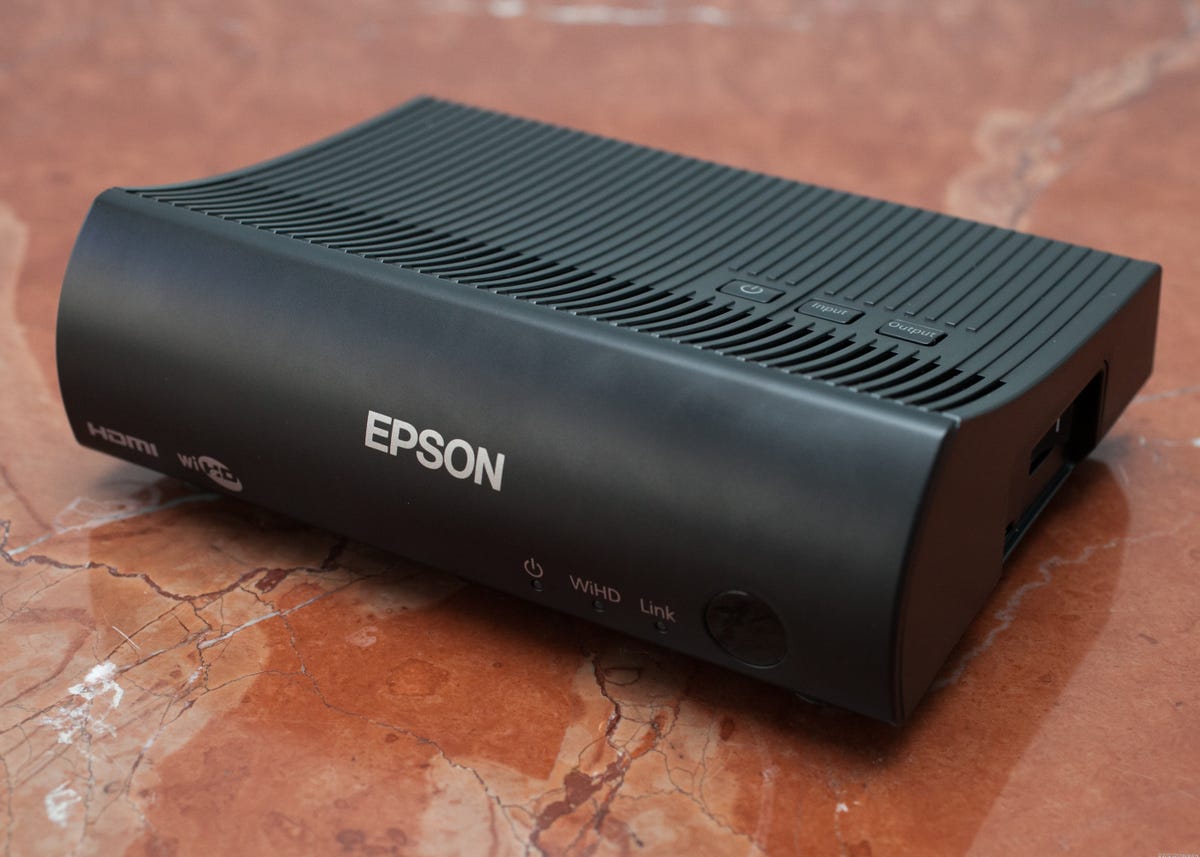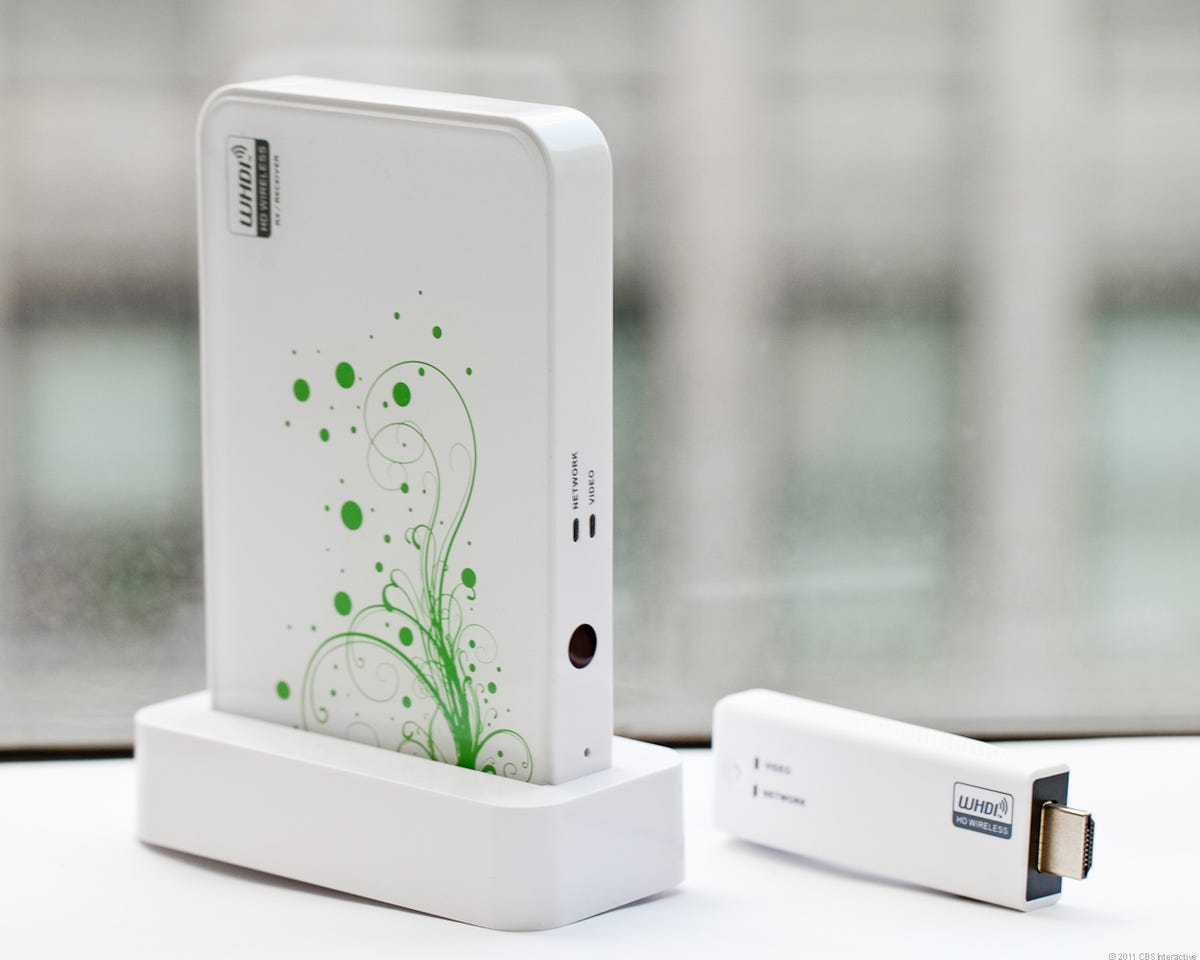Wires are boring. I mean it’s not like anyone could write half a dozen different articles on HDMI. The future is wireless.
The problem is, wireless HD is a fickle mistress. Competing standards, technological limits and cost all make it far less popular than the ubiquitous HDMI cable for conveying video and audio between devices in your home.
But if you don’t want to run ugly cables across your floor, or can’t run them through your walls, wireless can be great, and potentially worth the extra expense.
Wireless HD devices generally consist of two boxes, a transmitter and a receiver, and range from $150 to $400. You plug your source device(s) — such as a cable box, media streamer or Blu-ray player — into the transmitter box. You plug the receiver box into your TV or projector. Cross your fingers, fire everything up and hopefully you’ll get video and audio without having to run a long wire or drill through walls.
The two main competing wireless HD formats are WirelessHD and WHDI, and systems that use both are currently available. A newer format, called WiGig, will also enter the market this year. Here’s what you need to know about each one.


CNET
WirelessHD Example companies: Epson, LG, Panasonic, Samsung, Sony, others Frequency: ~60GHz Resolution: 1080p/60 (see “pros”) Max distance: 33 ft/10 m (see “cons”)
Pros: Full-resolution 1080p, up to 60Hz, uncompressed. Essentially no lag. The technology is capable of Ultra HD “4K” resolutions, but most current products only do 1080p.
Cons: Basically requires line of sight. The 60GHz transmission might be far above wireless interference (like most Wi-Fi signals), but it can easily be blocked by, well, just about anything. A wall, a cabinet door, your body (seriously). Basically, if your remote doesn’t work where you want to put the transmitter, WirelessHD probably won’t either.
Bottom line: WirelessHD is great for picture quality, promising uncompressed full HD, but you’ll have to make sure the transmitter and receiver can see each other. If you stand in front of one or the other, you could temporarily lose signal.


Epson’s WirelessHD transmitter for certain of its projectors.
Sarah Tew/CNET
WHDI Example companies: LG, Samsung, Sony, IOGear, others Frequency: ~5GHz Resolution: 1080p/60 (see “pros”) Max distance: ~100 ft/30 m
Pros: The biggest advantage WHDI has over WirelessHD is that WHDI works through walls. It will do 1080p/60 no problem. The WHDI 2.0 standard has support for 4K, but at the moment there don’t seem to be any products that support this.
Cons: Far fewer companies support WHDI, and the industry push seems to be for WirelessHD. The WHDI webpage hasn’t been updated in three years. There’s been no mention of 4K support recently. The 5GHz range could, in theory, interfere with some Wi-Fi standards.
Bottom line: In my testing for the Wirecutter, WHDI worked far better in the real world than WirelessHD (not least because you can walk in front of the transmitter and not have the signal drop out). However, it seems to have stagnated while the industry (inexplicably, in my book) supports the less user-friendly WirelessHD standard.
WiGig Example companies: Apple, Intel, Microsoft, Samsung, Sony, others Frequency: ~60GHz Resolution: n/a (4K likely) Max distance: n/a (in room/line of sight)
Bottom line: The WiGig standard, also known as 802.11ad, has been kicking around for several years and was absorbed into the Wi-Fi Alliance in 2013. We’ll start seeing products this year with WiGig compatibility. It has similar pros/cons as WirelessHD, since it also works primarily around the 60GHz range: high data transmission rates, little to no ability to work through walls. It’s unlikely it will be as prevalent in the TV space as WirelessHD, but you’ll likely start seeing it soon, so we figured it was worth a mention.
What about Wi-Fi?
There are a handful of products that send video over your Wi-Fi network. These certainly work, but there are two potential downsides. The first is they use compression (in varying amounts) to get the video from the transmitter to the receiver (and from there to your TV). So the picture quality, potentially, won’t be as good a some of the other standards here.
In addition, it’s also using up your Wi-Fi bandwidth, so there’s possible slowdown issues (causing an additional decrease in picture quality) or connection/speed issues with your other connected devices.


With Chromecast and AirPlay Mirroring, you can mirror your laptop or phone screen on a TV.
Sarah Tew/CNET
Source-specific systems
We’ve focused so far on wireless HD technologies that allow transmission between any source, and any display. There is a related group of technologies that work between specific sources and compatible displays. A common example of this would be Apple’s AirPlay, though there are several similar technologies. These all work over WiFi, either your home’s or in the case of Miracast, WiFi Direct.
AirPlay Mirroring Example companies: Apple, others Resolution: 720p/1080p
If you have an iOS device, or a Mac laptop, you can send what’s on the screen to a second-gen (or newer) Apple TV on the same network. The video is compressed, though by how much (and if it’s noticeable) varies depending on your gear.
Google Cast Example companies: Google, others Resolution: 1080p
Google’s version, more or less, of AirPlay, letting you send content from your mobile device (or PC, via the Chrome Web browser). The major difference is most content you only select via your device, and then it’s streamed directly by the Chromecast or other device to your display. Streaming local content from your device is also possible, and has similar limitations as AirPlay.
Miracast Example companies: Belkin, Google, others Resolution: 1080p
Like AirPlay and Chromecast, this technology allow you to mirror your phone’s display on a TV. It’s not as brand-limited, though. Most newer Android phones have Miracast built-in, as do some televisions.


An Intel Wireless Display, or WiDi, adapter from Shenzen.
Sarah Tew/CNET
WiDi Example companies: Epson, Intel, Google, LG, others Resolution: 1080p
Intel’s WiDi technology is basically their version of Miracast, letting people stream what’s on a PC to a compatible HDTV or projector.
Bottom lineless
If you want the simplest, cheapest, highest quality method for transferring video and audio from source to display, get an HDMI cable. They’re just a couple of dollars and give you pixel-perfect pictures.
They aren’t, of course, the most convenient in many cases. So if you want to rid your world of wires (or at least, the long-running ones), just keep in mind with any of the solutions here, there are going to be setup issues and possible dropouts.
Got a question for Geoff? First, check out all the other articles he’s written on topics such as why all HDMI cables are the same, LED LCD vs. OLED vs. Plasma, why 4K TVs aren’t worth it and more. Still have a question? Send him an email! He won’t tell you which TV to buy, but he might use your letter in a future article. You can also send him a message on Twitter@TechWriterGeoff or Google+ and check out his travel photography on Instagram.




